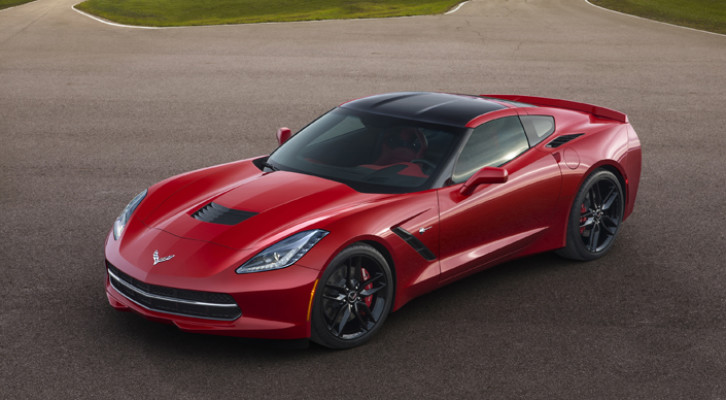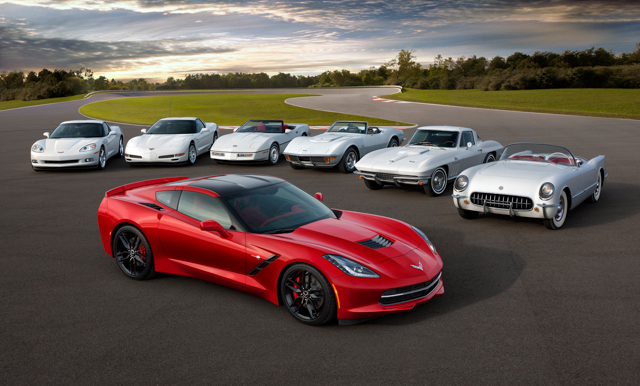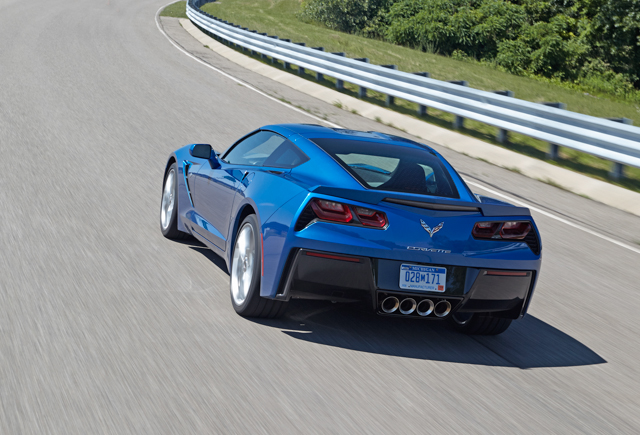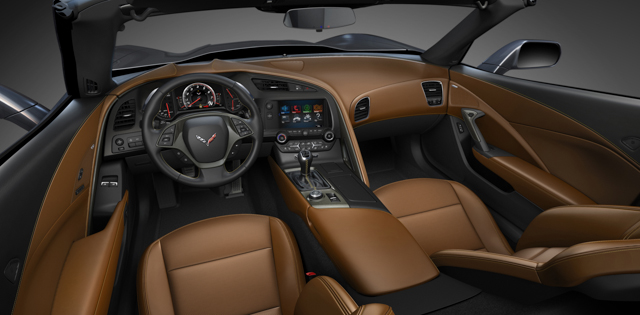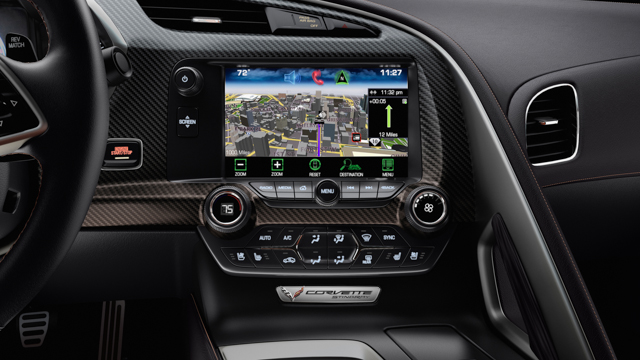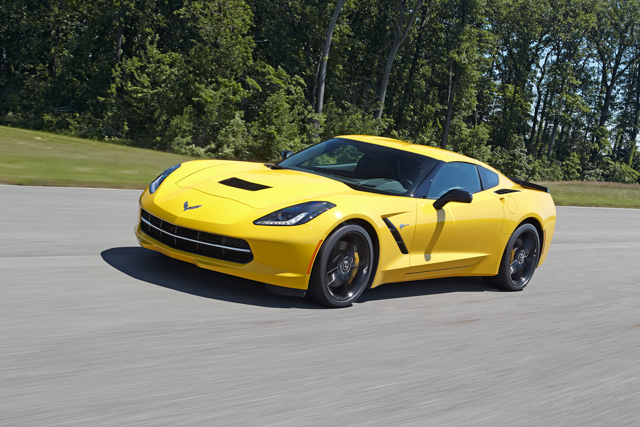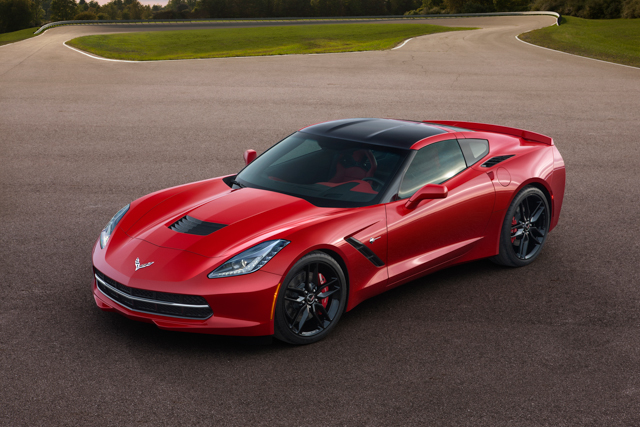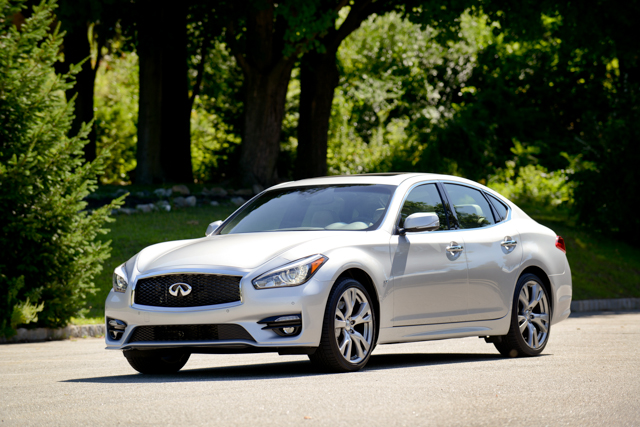The years go by, the sports-car market changes and evolves, and the Chevrolet Corvette always seems to adjust. Sure, there have been a few evolutionary missteps — the third-generation C3 models, while iconic, were not always exactly performance leaders — but for the most part, the Corvette has remained a respectable contender, granted street cred by means of good performance and racetrack success.
In 2014, it’s tough to be a sports car. High-powered sedans and SUVs are entering the fight for top performance. There seems to be a 900-horsepower hypercar around every corner, and vehicles such as the Porsche 911 and Audi R8 do not make it easy on poseurs. The Corvette has had to step up its game, and it has successfully done that with a comprehensive redesign for 2014. The Stingray moniker also has returned, to emphasize the new car’s focus on ultimate performance.
What’s the story with that redesign, anyway? At first glance, the new Stingray doesn’t look much like a Corvette at all. It’s got the long hood of a rear-drive, front-engine supercar, but there seem to be other elements mixed in. Too much influence from the Nissan GTR or Ferrari, perhaps. And yet, as the overall design grows on you, it becomes unmistakably Corvette. The latest Stingray has been influenced by racing Corvettes, as evidenced by the exposed flush head lamps and large lower air intake, whose chrome stripe carries just a hint of the original Corvette. Side vents and air extractors on the flanks make it clear that this is a downforce-generating body. The big, wide hood is carbon fiber, to save weight. The Corvette is available as a coupe or a convertible, and the hardtop has a removable roof panel — also carbon fiber, to ensure that the Stingray carries all of its weight down low.
The Corvette’s interior remains a snug, two-person cabin. What changed the most are the materials. Chevrolet has paid attention to the upholstery and craftsmanship; since the new Stingray has been thrust into competition with cars from Ferrari and Jaguar, after all, it’s got to look the part. Real carbon fiber and aluminum trim decorate the cockpit, and the leather is hand-wrapped for a coachbuilt feel. A fantastic new digital dash features a pair of reconfigurable 8-inch screens and a head-up display, while the smaller steering wheel allows for more precise inputs. The seats have magnesium frames, to reduce weight. Amenities include the Chevrolet MyLink infotainment system and a 10-speaker audio system with two subwoofers.
Twist the key and a new LT1 V-8 roars to life with a growl worthy of the name. Under the long, low hood, the 6.2-liter engine features variable valve timing and GM’s Active Fuel Management system. In stock form, the new Vette is good for 455 horsepower and 460 pound-feet of torque, and Chevy reports a 3.8-second 0-60 run. An optional performance exhaust boosts that by five horses. The standard seven-speed manual transmission includes a cool rev-matching function that blips the throttle for you on downshifts. And just to make the leap from “impressive” to “amazing,” the Vette also is the most fuel-efficient sports car on the market. On the freeway, the seven-speed manual transmission’s tall gearing returns 29 mpg. A six-speed automatic with paddle shifters is available.
That engine is nestled in an all-new aluminum frame, with a racing-inspired suspension that incorporates monotube shocks. An active Magnetic Ride Control suspension is available. The new Stingray is longer and wider than before, giving it a more stable footprint. Top 1.0 G on the skidpad? No problem. Standard Brembo brakes haul the Corvette to a stop from 60 mph in 107 feet. To make that edge even sharper, the available Z51 Performance Package adds a limited-slip differential, dry-sump oiling and additional brake, differential and transmission cooling. The car is superbly balanced and powerful, and it’s got a much more approachable vibe than a Porsche or a Ferrari. This is a Chevrolet, after all! Vettes are easy to relate to. There’s a big blind spot over the driver’s shoulder, but that’s fine — in a car like this, what’s behind you doesn’t matter, right?
Chevrolet also included a Drive Mode Selector system that enables the Corvette to be fine-tuned to your preference. The car’s attitude can be tweaked through a series of five settings: Weather, Tour, Eco, Sport and Track. A rotary knob next to the shifter enables the chosen mode. Tour mode is the default, and the rest are self-explanatory. In addition to changing the throttle input, shift points (on automatic transmissions), Active Fuel Management, suspension response, stability control, steering and other dynamic functions, the system also reconfigures the display to provide simpler, easier-to-read information in Sport and Track modes. A racing display with a lap timer is available in Track mode.
So, why would you want a 911 or a 458 Italia? The Corvette Stingray provides the same thrills and exotic attitude at half (or one-third) the price — which, for the record, starts at $51,995 for the coupe and $56,995 for the convertible.

